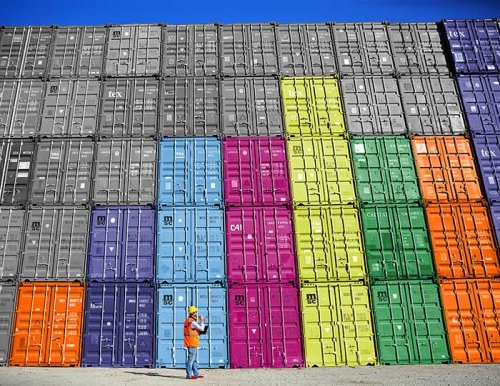The global economy’s heartbeat
26 July 2017
Every quarter macroeconomist Maarten Leen homes in on an unknown predictive economic indicator. This time around, it’s the RWI/ISL Container Throughput Index.
International trade is the backbone of our economy, linking businesses and consumers all over the world. Mammoth tankers and bulk carriers transport commodities (oil, coal, iron ore) across the seas to consumers in other countries. Most of the electronic goods and clothes we see in stores have also spent three to four weeks boxed up in a container.
Global container traffic is like the global economy’s heartbeat. The more freight movements there are, the greater the economic activity.

The first harbours to deliver their figures – two weeks after the end of the month – are Singapore and Hong Kong.
A fast index
To know how fast that heart is beating, we can consult the RWI/ISL Container Throughput Index. This index shows how many containers are being shipped through the world’s major sea ports.
Every month the Institut für Seeverkehrswirtschaft und Logistik (ISL) (Institute of Shipping Economics and Logistics) publishes the RWI/ISL Container Throughput Index. This index is based on the throughput data of 82 international ports accounting for about 60% of global container traffic. Shortly after the end of each month, this index gives a good indication of whether global trade – and hence the global economy – is going up or down.
Not all ports are equally prompt in providing the data. The first to deliver their figures – two weeks after the end of the month – are Singapore and Hong Kong. These ports are the world’s numbers two and three in terms of size. About 20 days after the end of the month, there are figures available from enough ports to make an initial estimate. This index is therefore an extremely fast indicator of the health of global trade. And after another month, more than 65 ports have generally sent through their data, allowing the ISL to publish a new estimate.
The ISL analysts adjust the figures for seasonal effects and also to eliminate temporary distortions. This is to provide the most accurate picture possible of the current trend in global trade. Temporary distortions include one-off events such as strikes, as well as influences like the celebration of the Chinese New Year, which doesn’t fall on a fixed date. Clearly, container activity is at a low ebb in the large Chinese ports during this holiday period.
Lehman Brothers
Here is one good example of what the ISL can tell us. In 2008, after the bankruptcy of US investment bank Lehman Brothers on 15 September, this indicator quickly showed the world was heading towards a severe recession. In November, the index nose-dived, making it clear the crisis would not be confined to the financial sector and would soon spread to the real economy. Early in 2009, the index was also quick to signal that the economic decline had been halted (although the real recovery would take considerably longer to arrive).
Protectionism
Despite all the recent talk of protectionism, the RWI/ISL Index for global container throughput is showing a strong upward movement (see figure). That is a favourable sign for the global economy. Whether the protectionist threats will be translated into trade restrictive measures is still unclear. But the RWI/ISL Index is sure to provide an early indication of which way the wind is blowing.
Growth in container throughput

Source: Institute of Shipping Economics and Logistics



